Say hello to the Isle of Rum! Of the four islands in the Small Isles in Scotland, Rum is the largest of the archipelago. However this is not respective to the island’s population, in fact, there are many more red deer on the island than people – we’re talking tens of residents to hundreds of deer!
From the bogs and beaches to the cloud-capped peaks, Rum is a car-free outdoor paradise. There aren’t many facilities on the island, but the lack of infrastructure certainly contributes to the charm of the place. It can be either a bubble of solitude or a great getaway for solo travellers who are ready to talk tent weights and midge repellents at the campsite. Either way, Rum is a fantastic island to have an adventure!
Table of Contents
Have you run out of time? Pin this article to read later.
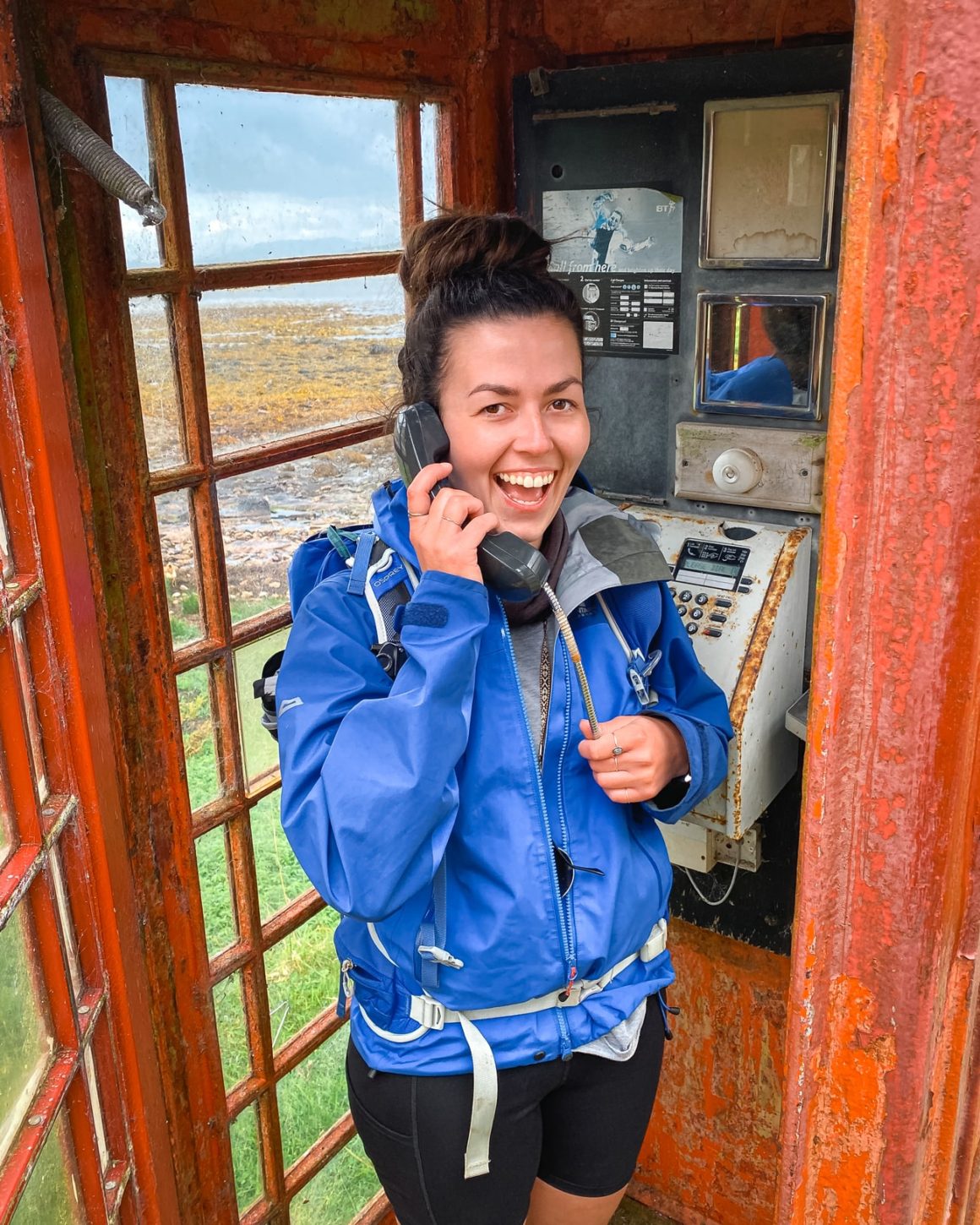
Where is the Isle of Rum?
The Isle of Rum is the largest of the four small isles (Rum, Canna, Eigg and Muck). These islands are part of the Inner Hebrides in West Scotland. Basically, they are across the water from Skye and Mallaig.
How do you get to the Isle of Rum?
It is possible to visit the Isle of Rum all year round though route options are more limited in the winter. Either way, there is no airport, bridge or tunnel. The only way over to the Small Isle is by boat.
It is possible to explore the Isle of Rum on a day trip. At the time of writing this article, it was possible to do so with a Calmac ferry on Monday, Wednesday or Friday as the boat docks twice during these days. The guided tours are also a great option for day trippers who’d prefer to eliminate the headache of the island-hopping ferries.
Ferry to Rum
Caledonian MacBrayne runs a (mainly) passenger ferry service between Mallaig and the four Small Isles. There isn’t normally a need to pre-book tickets. They can be bought in the harbour office in Mallaig prior to boarding. The journey time is approximately 1.5 hours if that particular route is direct, as the ferry may visit other islands beforehand.
Visitors’ vehicles are not permitted on the island but there is parking available close to the harbour in Mallaig.
NOTE: The ferry timetable differs between summer and winter.
The MV Loch Nevis is normally the boat Calmac sail between the mainland and the Small Isles. There are plenty of outdoor chairs to catch the sun, rain or more likely, the wind on your face. Inside, passengers can relax in the lounge area or eat in the canteen. The boat is also equipped with a charging station, a pet-friendly area, luggage storage and toilets. In addition, bicycles can be brought onboard without any extra payment, though they are also available to hire on the island.
The Calmac Summer Ferry Timetables for the Small Isles can be found here.
Guided Tour
From Mallaig (Mainland) – Western Isles Cruises offer boat trips to and from the island of Rum. Their boats depart from Mallaig Harbour.
From Arisaig (Mainland) – Arisaig Marine‘s ferry, MV Sheerwater, sails to Rum at 10 am on Tuesdays. This boat journey may be more expensive than taking a Calmac ferry, though they promise to divert with wildlife sightings.
From Elgol (Skye) – AquaXplore have multiple tours that include a varying amount of time on the island of Rum.
Can you drive on the Isle of Rum?
Visitors will be unable to take their vehicle to the Isle of Rum. The ferry does have the capacity for a few vehicles but each island of the Small Isles requires a permit for cars. This is typically only supplied to the residents, or visitors for valid reasons. There are also no tarred roads on the islands so cars would need to be capable of rocky roads and rough terrain.
Can you stay on the Isle of Rum?
There are a few choices of accommodation on the Isle of Rum; from guesthouses to a remote bothy. It is advisable to pre-book if you intend to stay on the island (unless you will be camping).
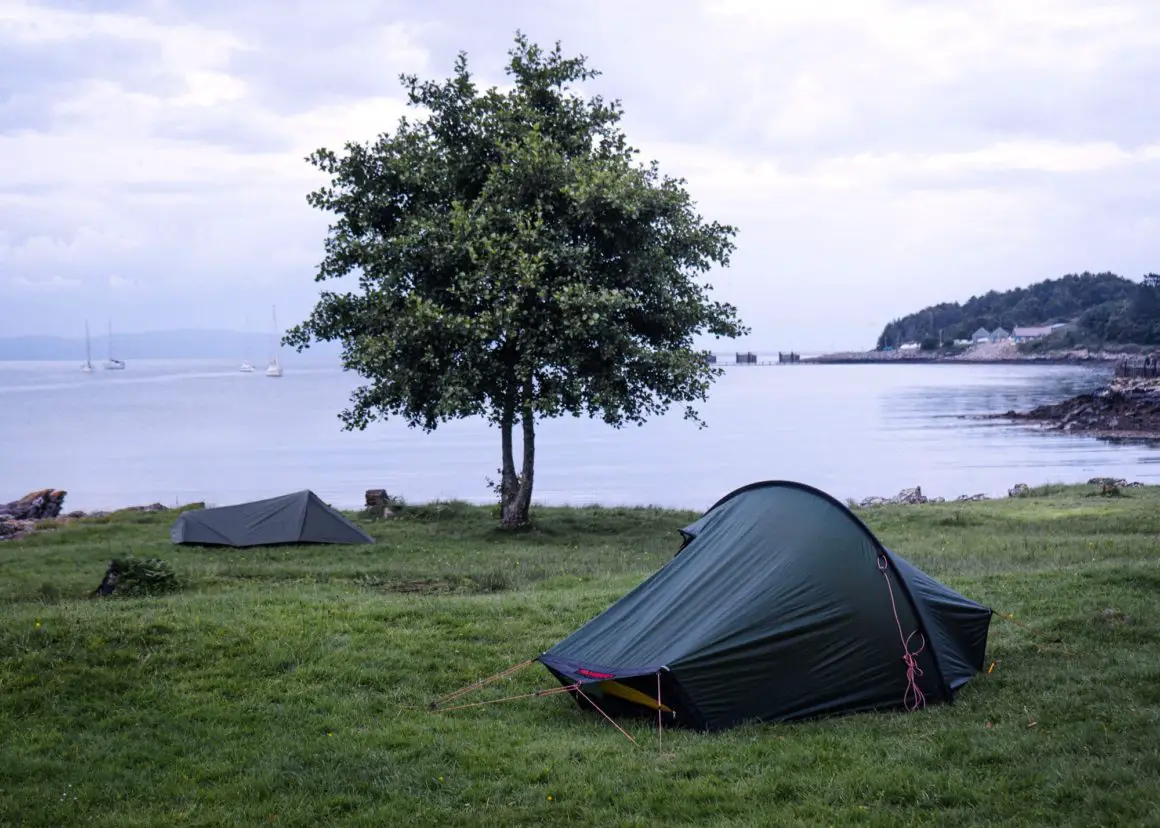
Camping
Wild campers are welcome to explore and discover the Isle of Rum, though staying at the campsite will be more appreciated by the local wildlife, landscapes and economy.
As visitors disembark the ferry and find their bearings along the only track, a staff member of the Rum Bunkhouse & Campsite will be ready to welcome guests to both the bunkhouse and campsite.
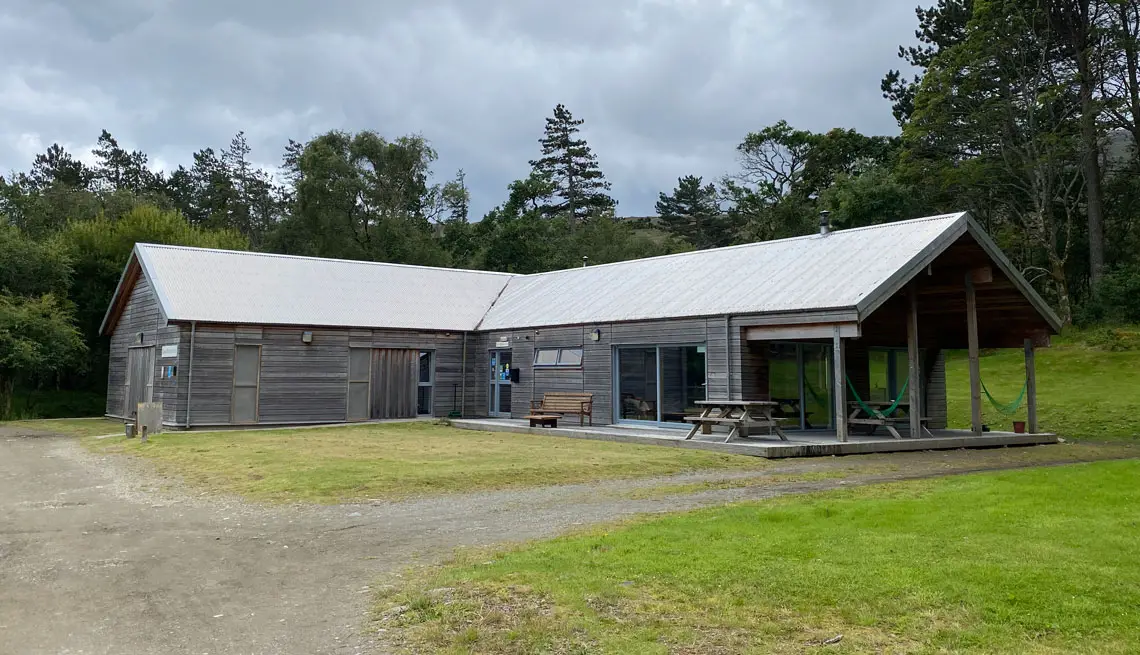
Bunkhouse – This self-catering accommodation has 20 spaces available in dorm rooms with a minimum of two beds. Guests can book individual beds, dorms or even the entire bunkhouse. There are two fully-equipped kitchens, free wifi and a communal area to lounge whilst overlooking the bay ahead.
Campsite – The campsite would be hard to miss as you walk around the bay along the only track from the ferry terminal. There are plenty of flat grassy spaces for tents around the waterfront. The facilities include a small wooden shelter, two toilets, two amazingly hot showers, a freshwater tap and a his&hers sink with a view across the bay.
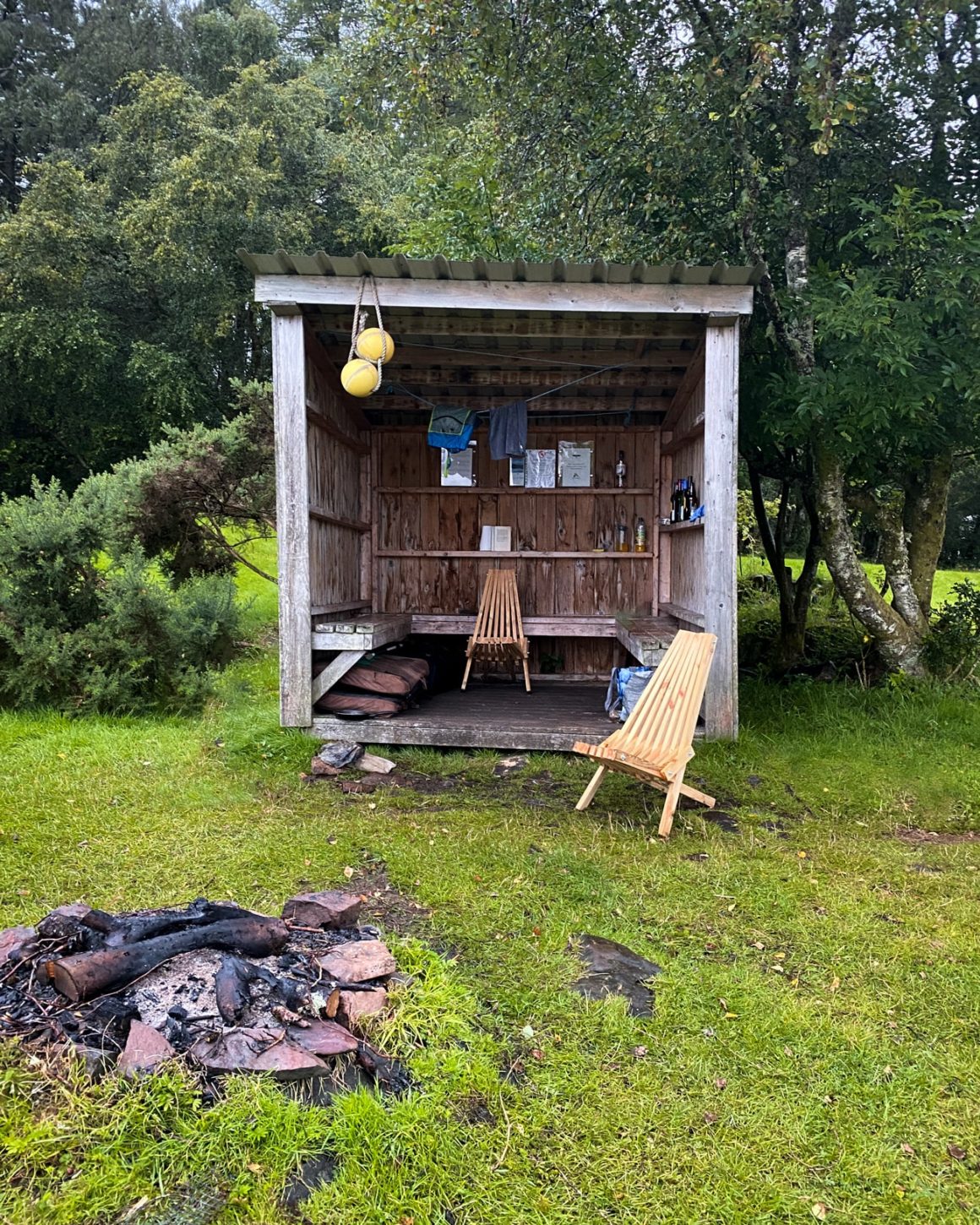
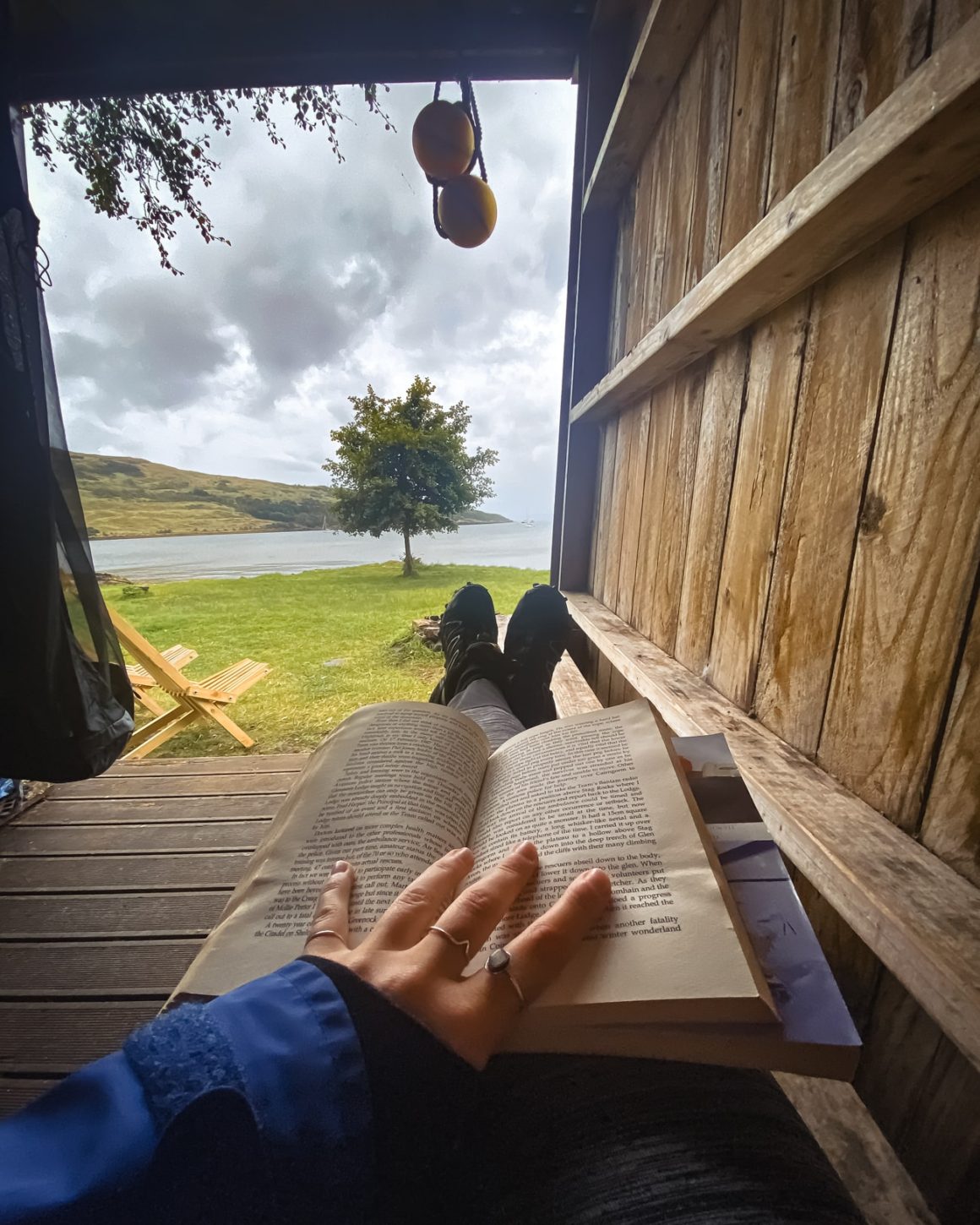

Camping Pods – In addition, there are also two camping cabins. They offer sleeping space for up to four people each, without any kitchen facilities.
BBQ Bothy – This is the newest addition to the campsite. The shelter sleeps four people but seats a lot more for a dry, warm and midge-free feast.
Mountain Bothies
There are two bothies on the Isle of Rum, both of which are a fairly substantial walk from Kinloch. They are in two separate directions.
Dibidil – Originally a shepherd’s house, the bothy at Dibidil was renovated by the MBA in 1970. It can be accessed along a 5-mile path from Kinloch. There are reports of good mobile coverage and great views across Eigg from this bothy. It also has an open fire, though unfortunately, it’s rare to find any useable fuel nearby. There are sleeping platforms inside. The location’s grid references are LR39: NM 393 928 with the walk taking approximately 3.5 hours each way.
Guirdhil – This bothy is also an old shepherd’s cottage that dates back to the late 19th century. The building was renovated in 1982 from a near-ruin state. It has a wood-burning stove and sleeping platforms. Access by bike is not advisable. The location’s grid references are LR39: NG 320 014. A walk along the rough track to Guirdhil will take roughly 3 hours.
Both buildings are maintained by the Mountain Bothy Association, and like other bothies, they are free to use but operate on a first-come, first-served basis.
Accommodation
The Ivy Cottage Guest House is the one and only B&B on the island. It has two en suite rooms and a self-catering Shepherd’s Hut called Bramble Bothy. They offer breakfast, dinner and packed lunches, as well as free wifi.
Are there facilities on the island?
The entire island is managed by Nature Scotland as a National Nature Reserve, whilst the community own the village of Kinloch. Being the only village on the island, Kinloch is home to all of the island’s amenities.
Visitor Centre – The tiny, but informative, visitor centre is located on the left as you step foot off the ferry.
Village Shop – The Isle of Rum has one shop. It is located next to the Village Hall. It’s small but surprisingly well-stocked; from midge repellent to camping gas, the odd avocado to milk, ice cream and alcohol. This general store may only be open for a couple of hours a day. There is a sign on the outside stating these varying times.
Phone Box – There is a working payphone in an iconic red phone booth along the shore, behind the village hall. It is coin-operated.
Post Office – There is a post office at the village shop with a post box just in front.
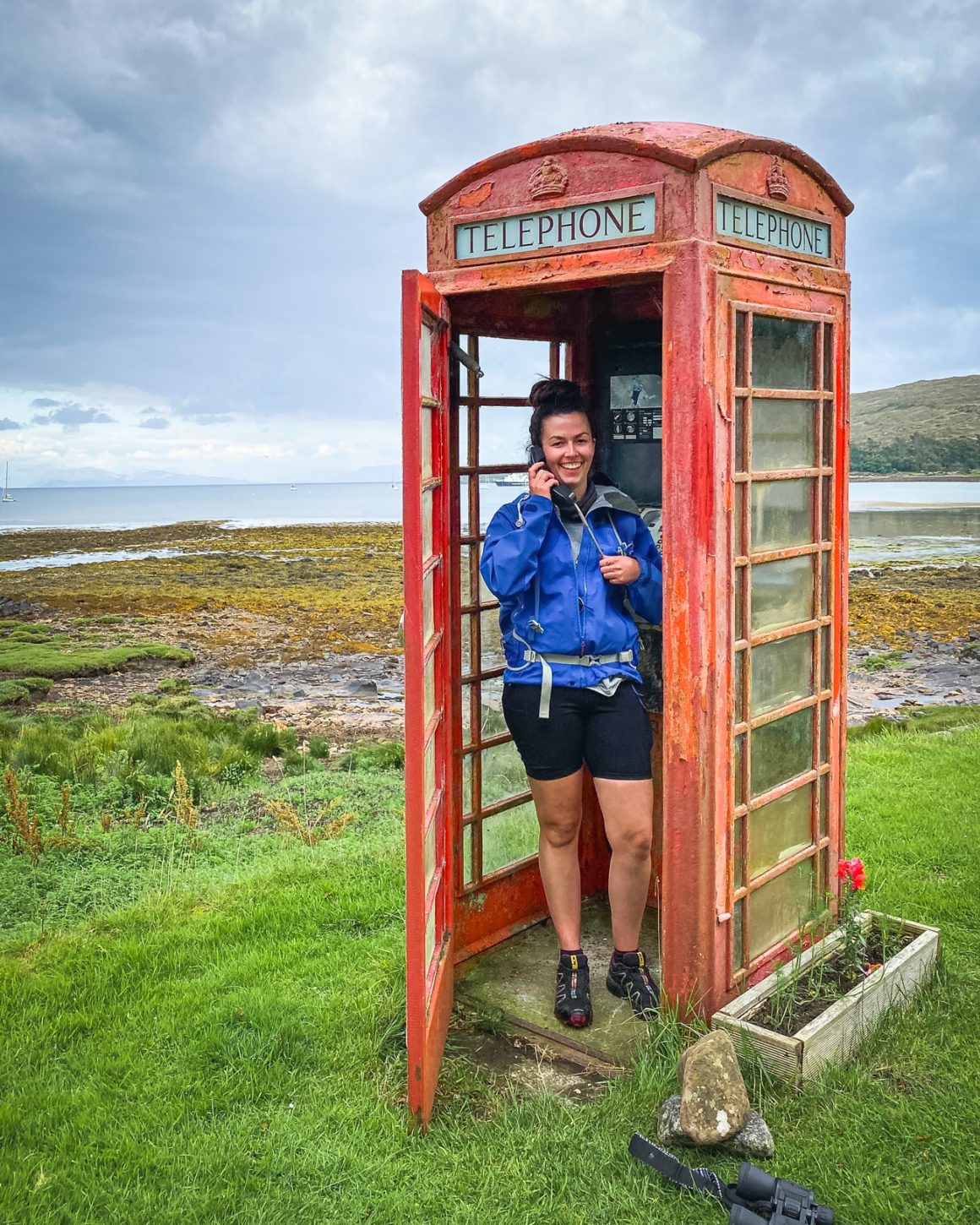
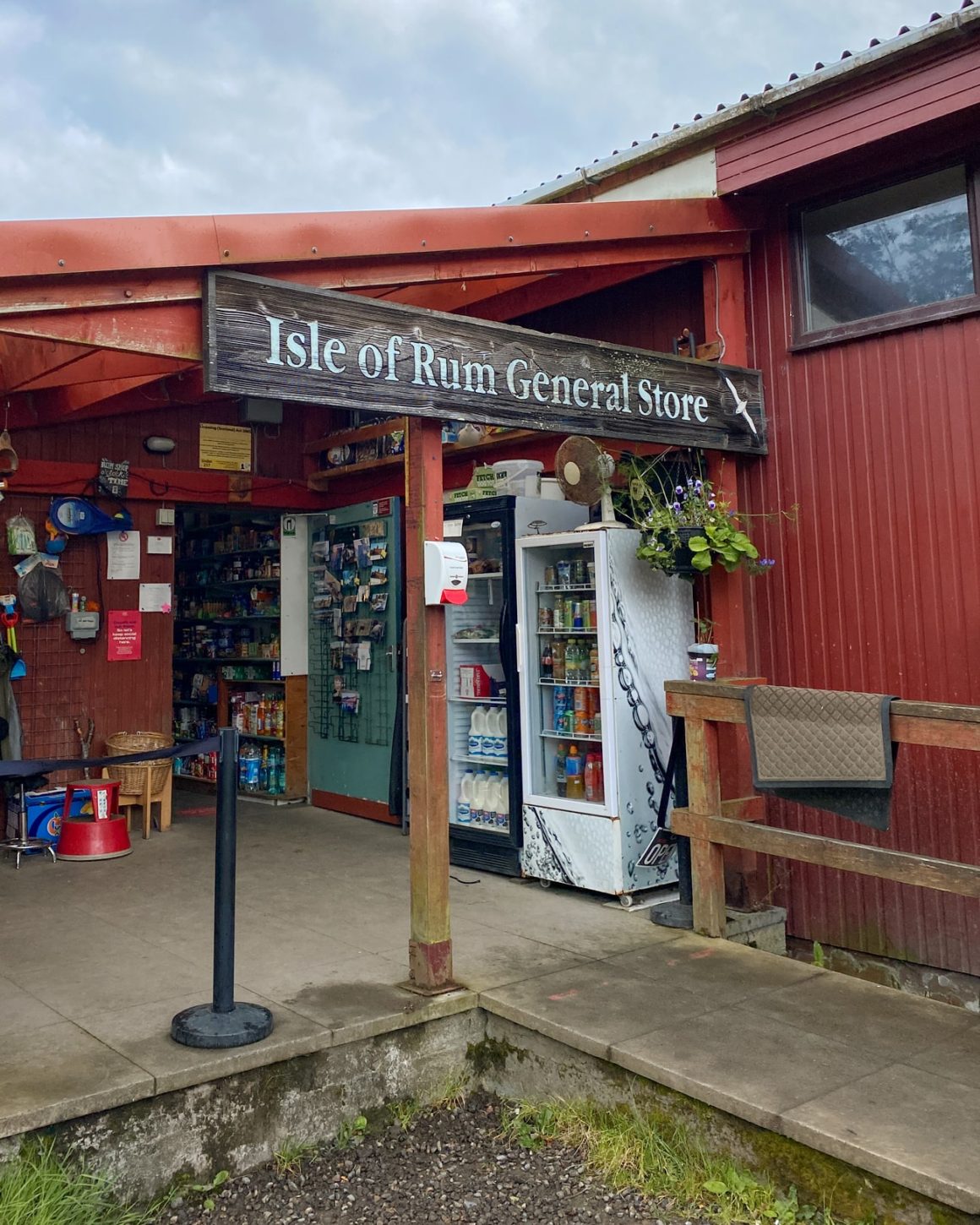
In addition to the necessities, there is also the Rum Craft Shop where guests can buy locally-produced, handmade crafts whilst paying via the on-site honesty box.
What are the things to do on Rum?
The Isle of Rum is a paradise for walkers of all abilities, yet the island is usually discovered by visitors on two dirt tracks that travel from Kinloch to other segments of the island’s coastlines.
It’s easy to navigate to any popular point of interest on the island with straightforward signs and simplified maps which are available at the campsite, shop and ferry terminal.
North – The route to Kilmory Bay is a pleasant 10-mile (16 kilometres) return journey. Each way should take approximately two hours. Hikers are rewarded with a beautiful sandy beach with views of Skye’s Cuillins on a clear day.
South West – Take the track towards Harris Bay to admire the Bullough’s Mausoleum. The round trip is 16 miles (26 kilometres) long which would amount to roughly four hours each way.
Since the island is also incredibly mountainous, walkers could also climb Rum’s three peaks; Ainshval, Sgurr nan Gillean and Askival (the highest point on the island). The Coire Dubh Viewpoint is also a popular choice as a 5-kilometre round trip.
If you only have time to wander around Kinloch, look out for Kinloch Castle, otters at the Otter Hide or enjoy a meal at Kim’s Kitchen.
Amongst many other wildlife species, Rum is home to over 900 red deer. It won’t be long before you’ve spotted your first as they aren’t afraid to spend time in the village.
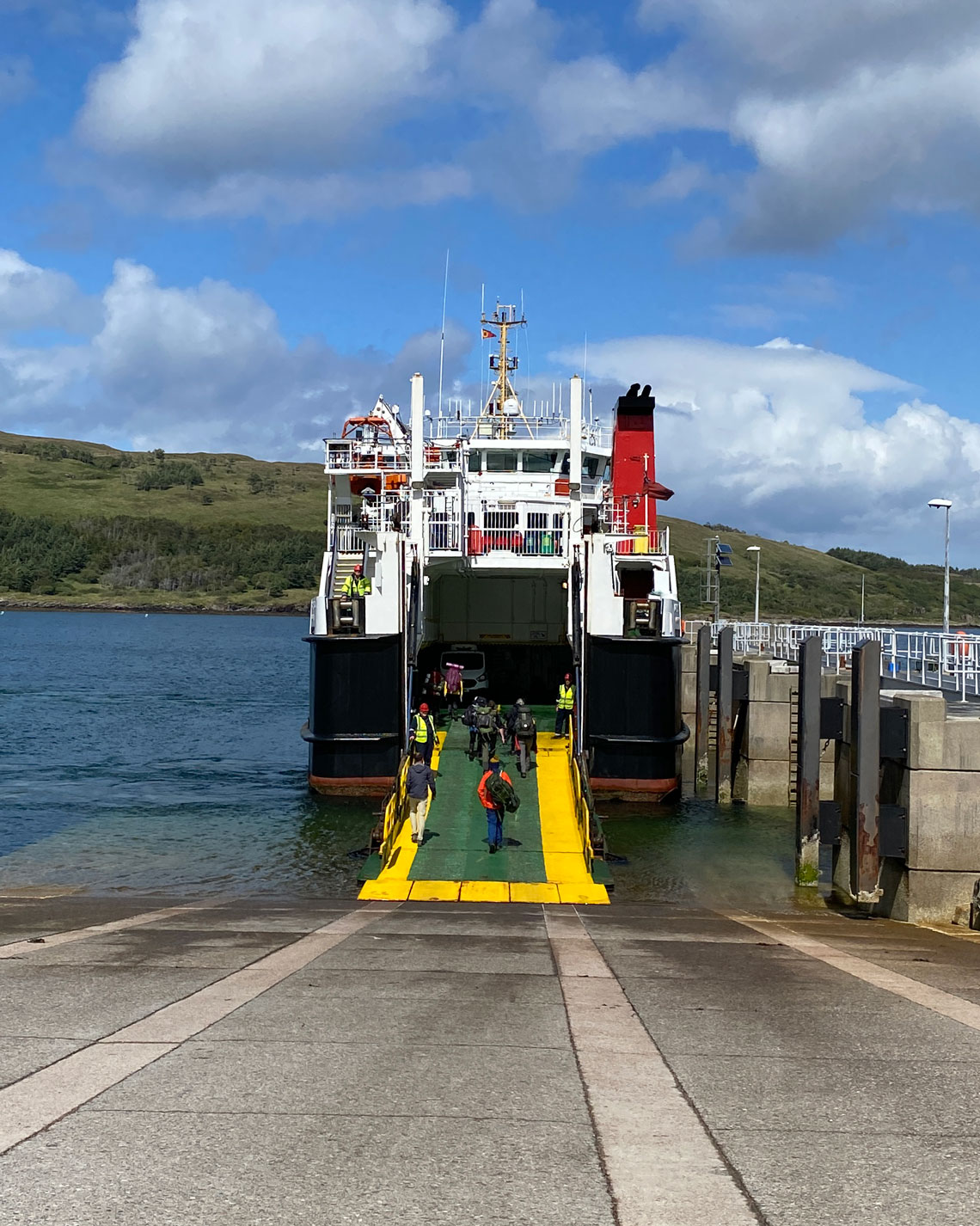
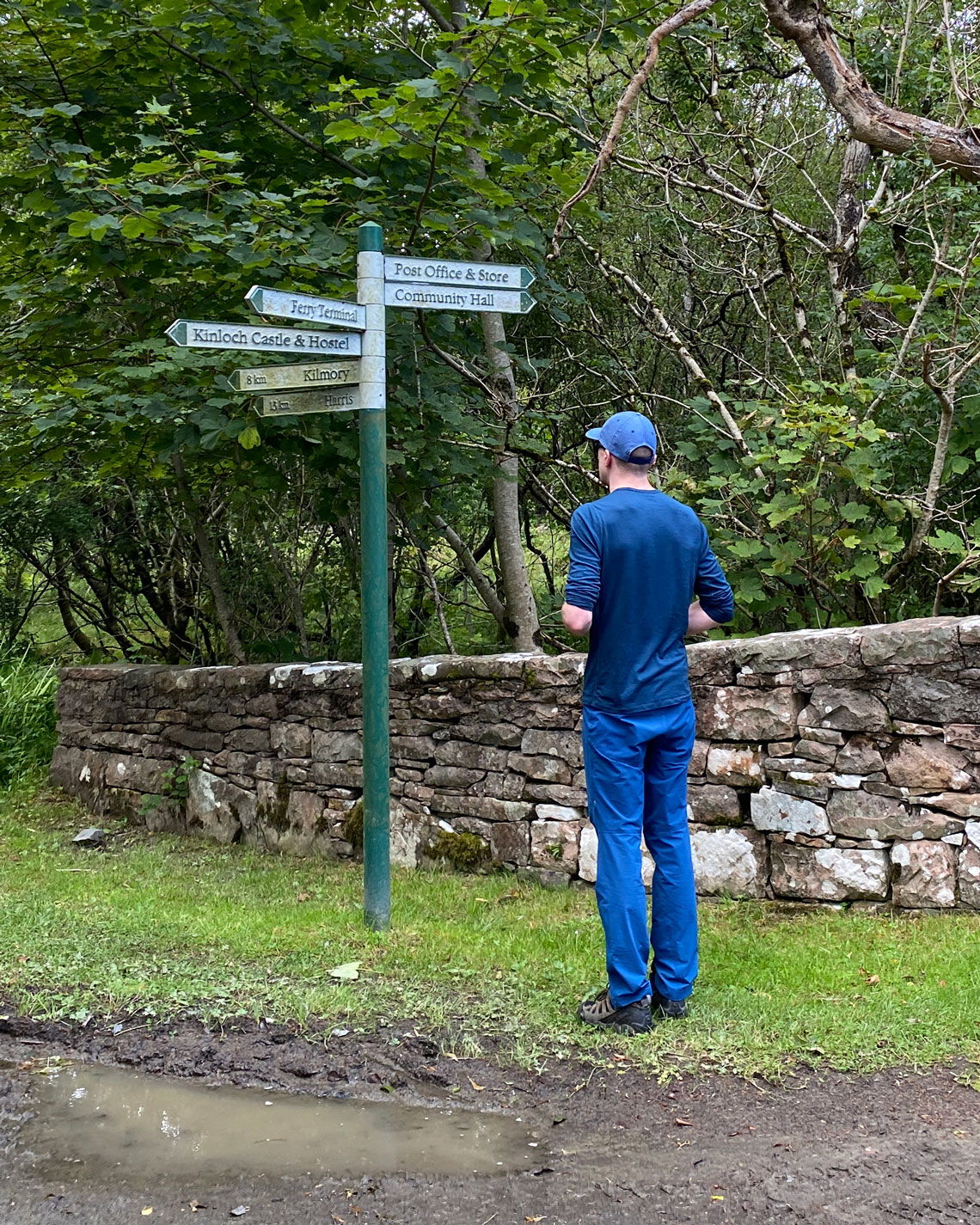
RELATED: The Complete Guide to Visiting the Isle of Canna
What should you pack for visiting Rum?
Cash
There are many payment options for the accommodations and ferries but visitors should take cash for tips and honesty boxes. The village shop does have a cash machine, offering cashback too, but there is a minimum spending amount.
Binoculars
From faraway boats to identifying wildlife, binoculars are a great investment for a visit to the Isle of Rum.
Critter Control
The Isle of Rum is home to some of the worst midges. They are fierce so be prepared! This is especially the case between the months of May and September. In my experience, I have also been targetted by a couple of ticks in the Small Isles.
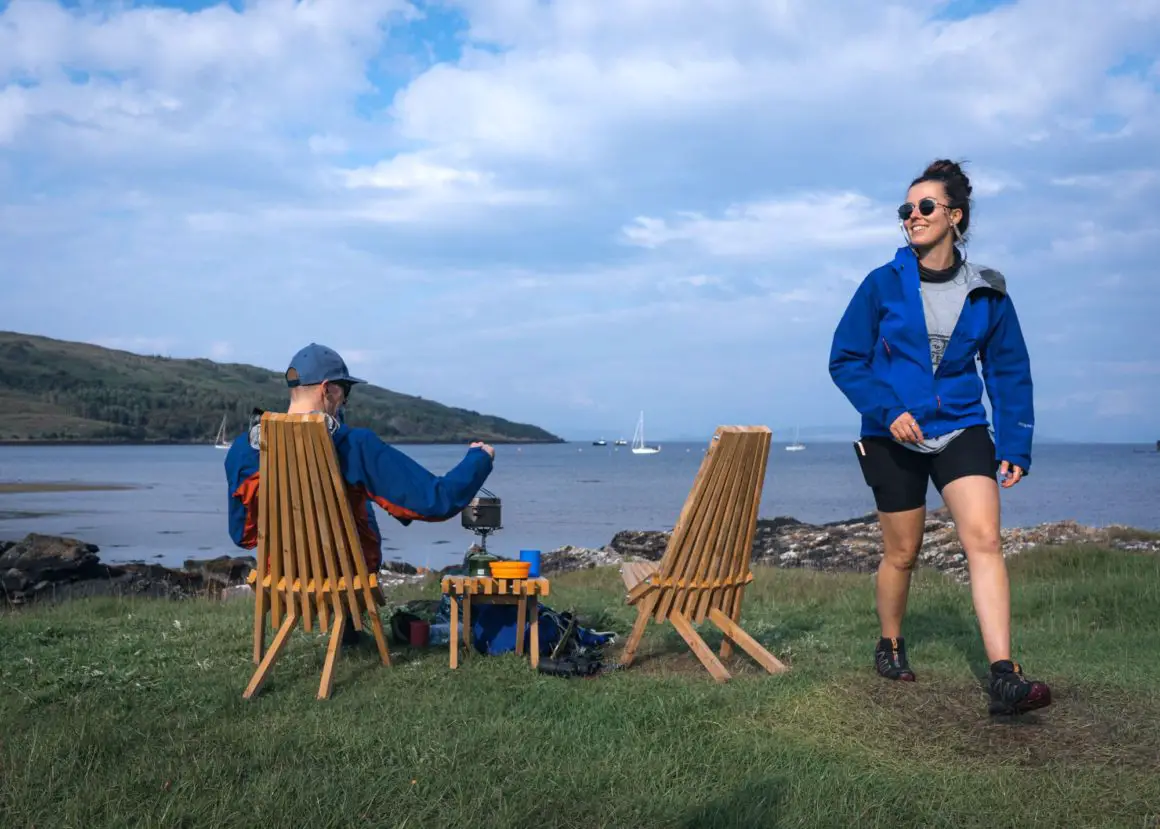
READ: The Best Places to Visit in Scotland (Recommended by a Local)
Let’s go!
@katie.maree
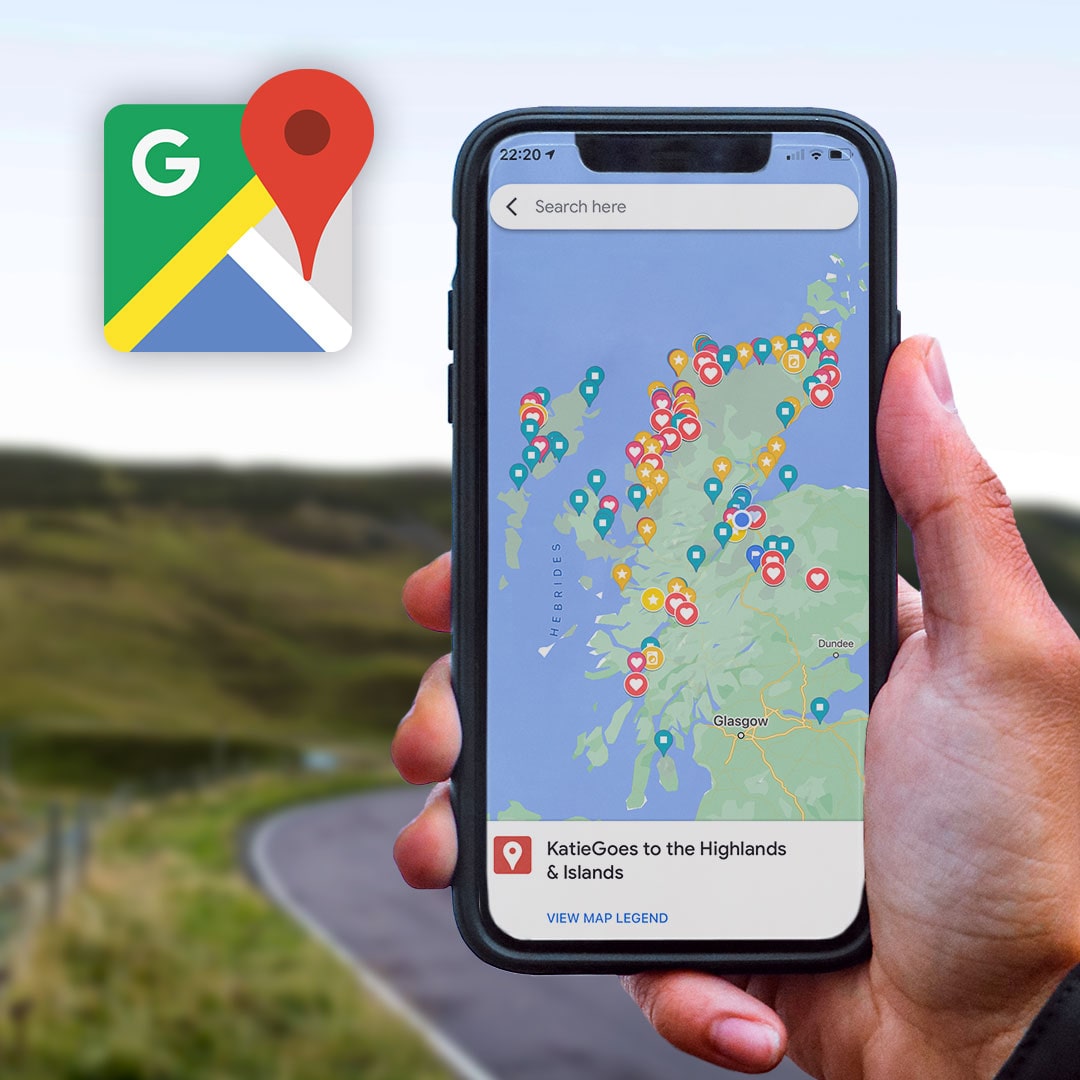
Scottish Highlands Google Map Legend
This Google Map Legend showcases 140+ need-to-know coordinates within our bonnie Scottish Highlands & Islands:
- Awesome Wild Camping Park-Ups
- Best Walks, Viewpoints, Beaches
- Bucket List Locations
- Accessible Showers & Fresh Water Taps
- Relevant Links to Online Travel Guides
Pin to Pinterest
Have you run out of time? Click pin to save this article for later.

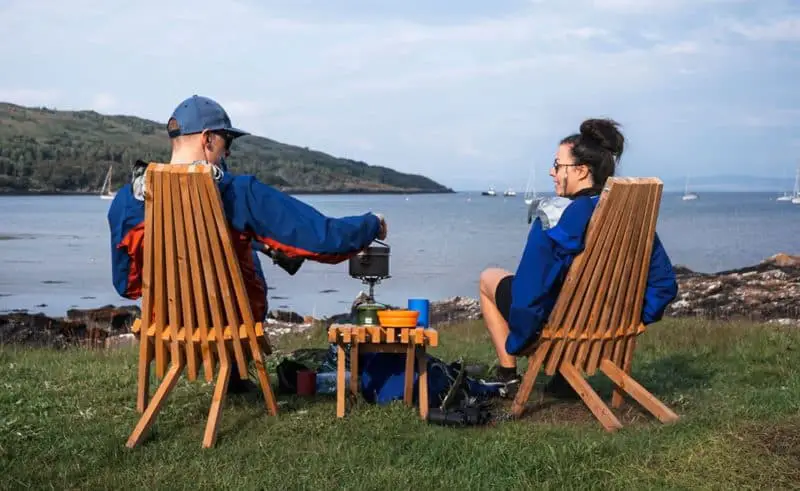



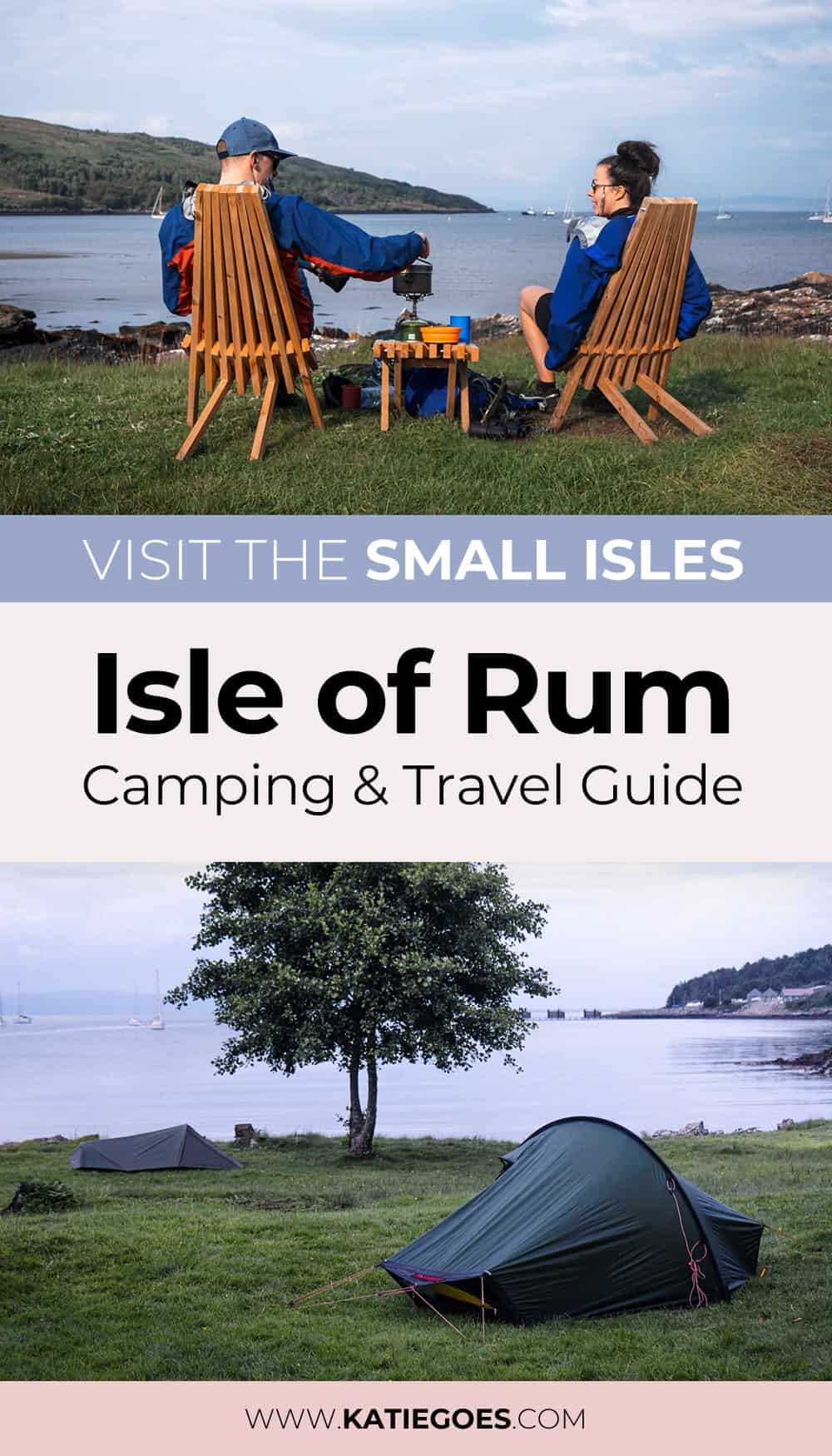
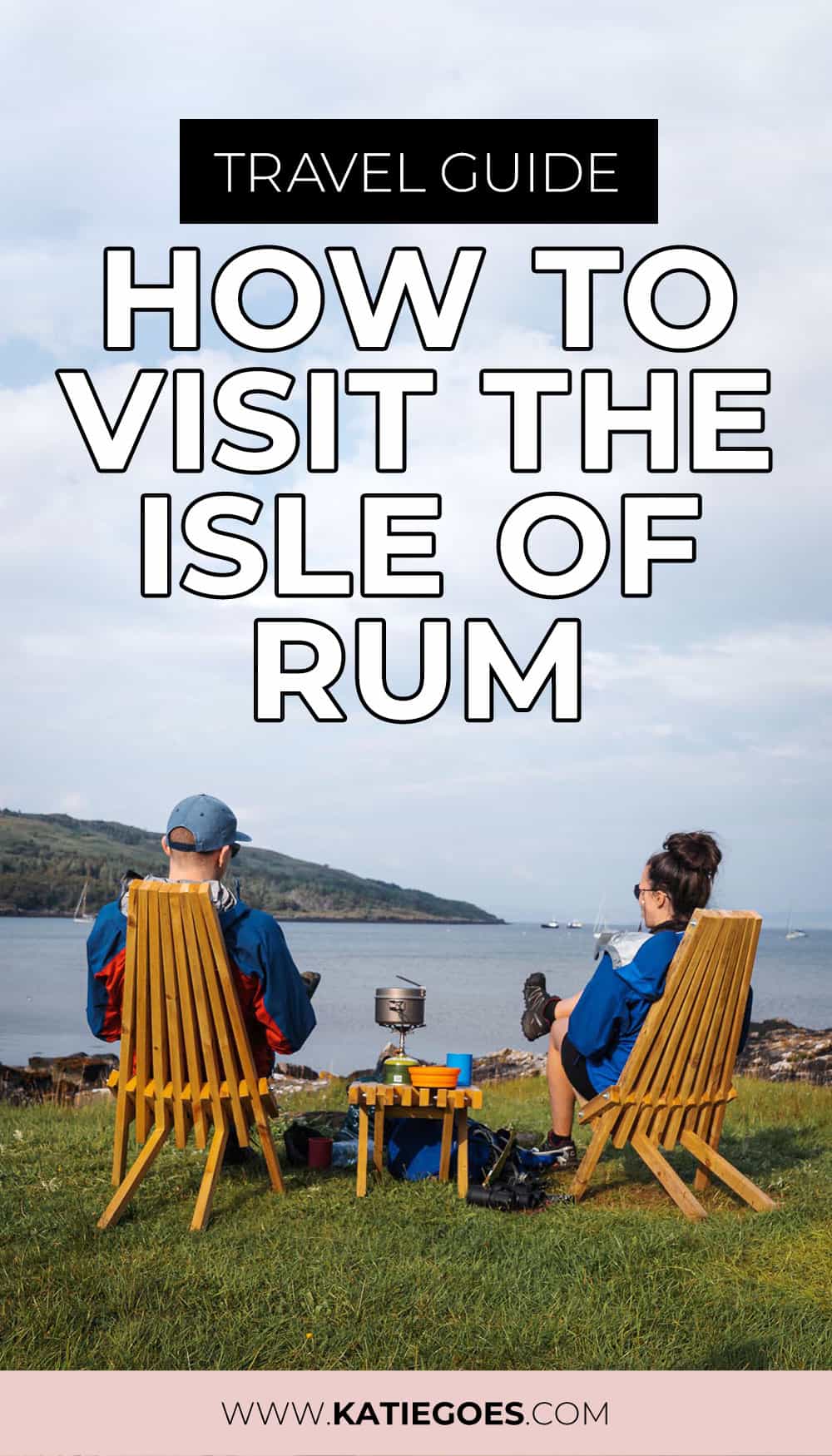

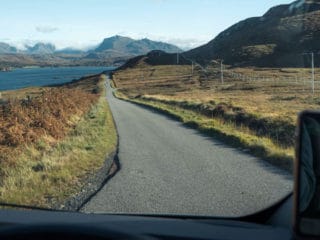

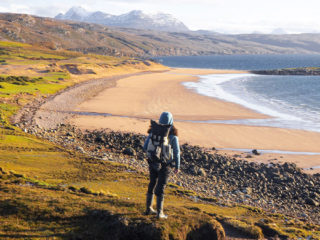
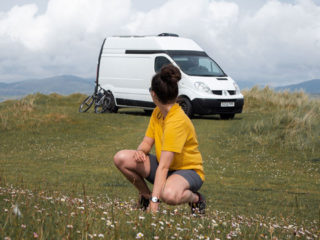
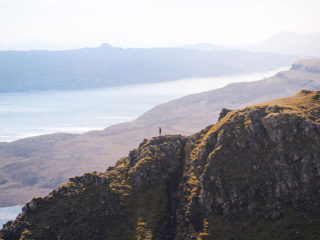


3 comments